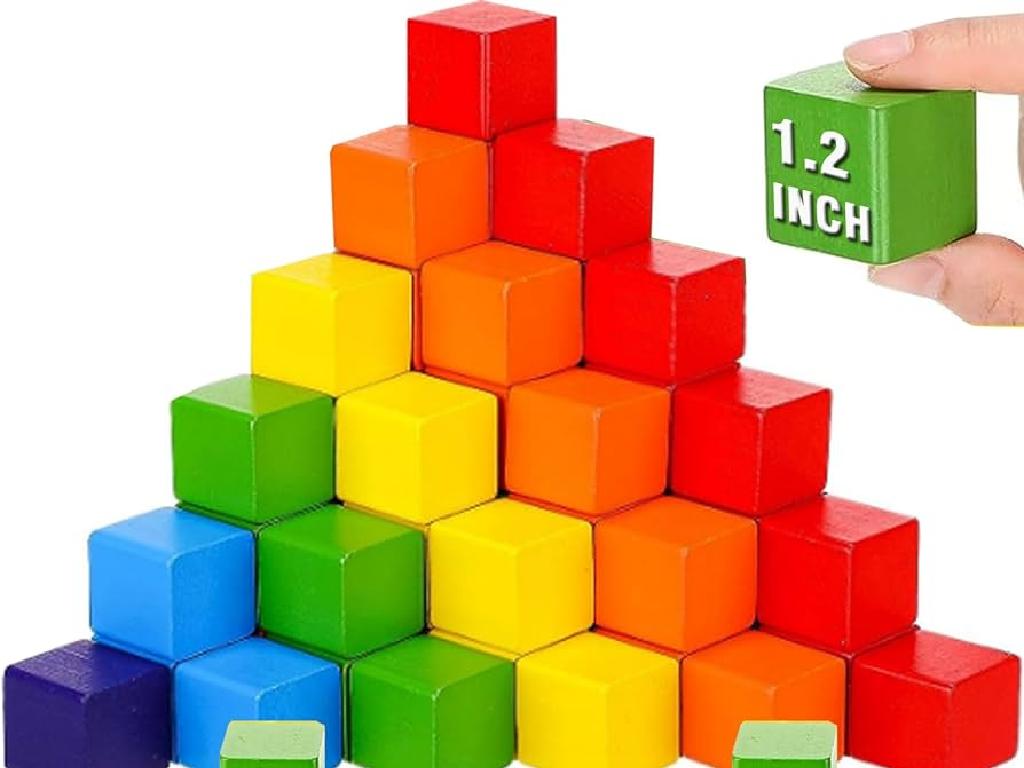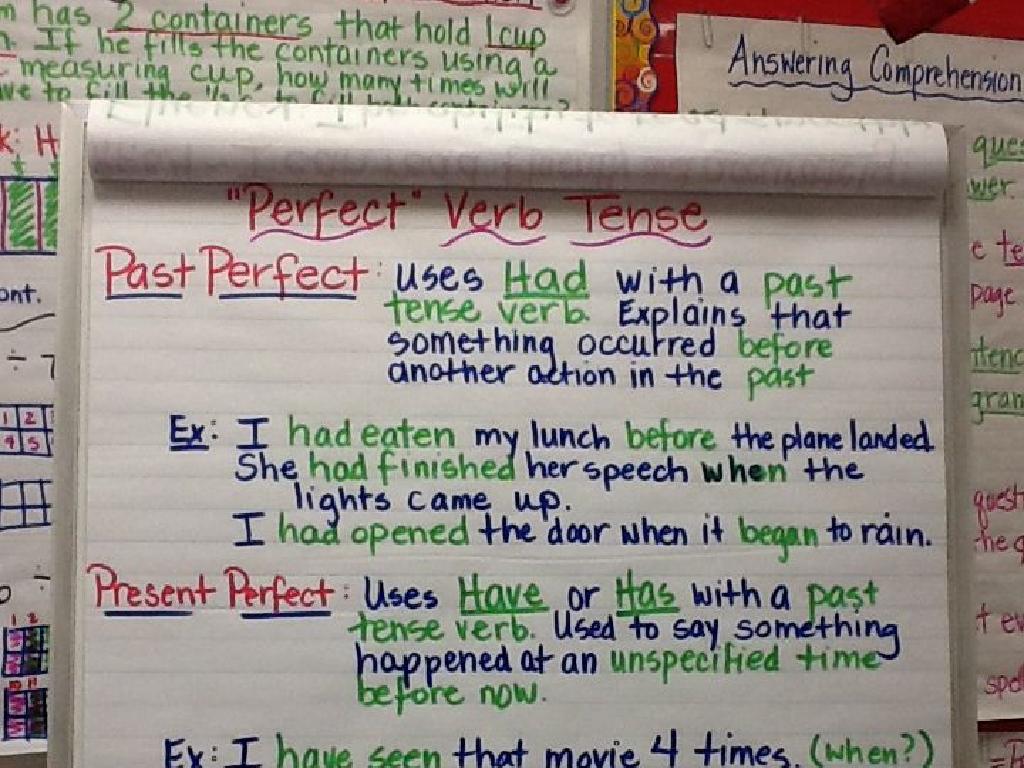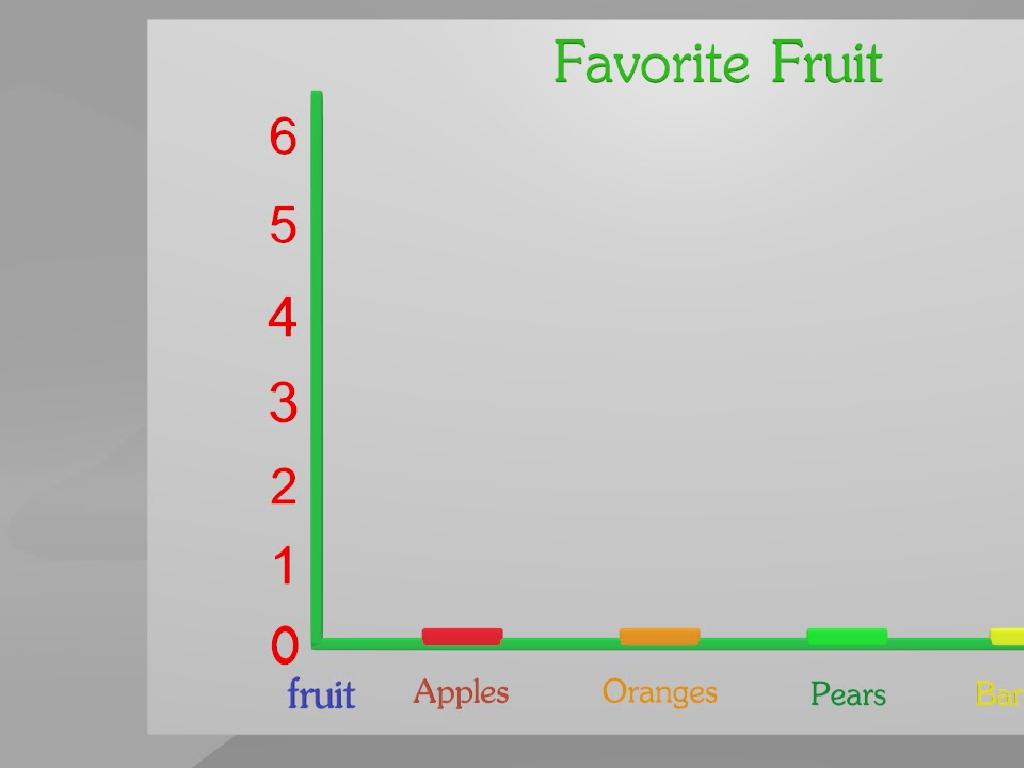Is It A Complete Sentence, A Fragment, Or A Run-On?
Subject: Language arts
Grade: Fourth grade
Topic: Sentences, Fragments, And Run-Ons
Please LOG IN to download the presentation. Access is available to registered users only.
View More Content
Understanding Sentences, Fragments, and Run-ons
– What is a complete sentence?
– A complete sentence has a subject, verb, and expresses a complete thought.
– Recognizing sentence fragments
– Fragments lack a subject, verb, or complete thought.
– Identifying run-on sentences
– Run-ons are two sentences joined without proper punctuation.
– Why differences matter
|
This slide introduces the fundamental concepts of sentence structure in writing. A complete sentence is the basic building block of writing and must contain a subject, a verb, and express a complete thought. Sentence fragments are incomplete sentences that fail to convey a full idea, often missing crucial elements. Run-on sentences occur when two or more sentences are improperly joined without correct punctuation or conjunctions. Understanding the difference between these is crucial for clear communication. Students should learn to identify and correct fragments and run-ons to improve their writing skills. In the next class, we will practice distinguishing between these and learn how to make every sentence clear and complete.
Exploring Sentence Structures
– What makes a sentence complete
– A subject and a predicate are needed.
– Complete sentences express a full idea
– It’s not a fragment or a run-on; it’s a whole idea.
– Example: ‘The cat napped in the sun.’
– Subject: ‘The cat’, Predicate: ‘napped in the sun’.
|
This slide introduces students to the concept of a complete sentence. Emphasize that every sentence needs a subject (who or what the sentence is about) and a predicate (what the subject is doing). Explain that a complete thought is one that has both these elements and makes sense on its own. Use the example provided to illustrate a complete sentence, pointing out the subject and predicate. Encourage students to create their own examples of complete sentences and share them with the class. This will help them distinguish between complete sentences, fragments, and run-ons as they progress.
Identifying Fragments in Sentences
– What’s a sentence fragment?
– A fragment is a piece of a sentence, missing a subject or verb.
– Why fragments aren’t complete
– Without all parts, it can’t stand alone as a sentence.
– Spotting fragments in sentences
– Look for missing subjects, verbs, or complete thoughts.
– Practice with examples
– ‘Running fast, but where?’ is a fragment; it’s missing a subject.
|
This slide aims to help students identify sentence fragments and understand why they are not complete sentences. Begin by explaining that a fragment is like a puzzle piece, it’s incomplete on its own and needs more to make a full picture. Emphasize that a complete sentence needs a subject (who or what) and a verb (action or state of being) to express a complete thought. Show examples of fragments and ask students to identify what’s missing. Encourage them to explain why these fragments can’t stand alone. Provide practice sentences and have students work in pairs to find and fix fragments. This interactive approach will solidify their understanding of sentence structure.
Run-on Sentences: Spot and Fix Them!
– What’s a run-on sentence?
A run-on sentence has too many ideas without proper punctuation.
– Fixing a run-on sentence
Use periods, commas, or conjunctions to separate ideas.
– Examples of run-on sentences
For example: ‘I love to read I read every day’ is a run-on.
– Practice spotting and fixing
Let’s correct run-ons together in class!
|
This slide introduces the concept of run-on sentences to the students. Explain that a run-on sentence is like trying to fit too many thoughts into one breath without taking a pause. It’s important to show them how to use punctuation like periods and commas, or conjunctions like ‘and’ or ‘but’ to break down these sentences into manageable parts. Provide clear examples of run-on sentences and work through them together, turning them into correct sentences. Encourage students to bring examples of run-on sentences they find in their reading or have written themselves to discuss and correct in the next class.
Let’s Practice: Sentence Structure
– Identify sentence types
– Is it complete, a fragment, or a run-on?
– Partner up for corrections
– Help each other find and fix mistakes
– Share your answers
– Discuss what you’ve learned with the class
– Learn and have fun!
|
This slide is for a class activity focused on understanding sentence structures. Students will work in pairs to identify whether a given sentence is complete, a fragment, or a run-on. They will then collaborate to correct any fragments or run-ons they find. Afterward, each pair will have the opportunity to share their answers with the class, facilitating a discussion on the importance of proper sentence structure. The teacher should prepare examples of each sentence type for practice and guide the students through the correction process. Possible activities include sentence sorting, rewriting run-ons and fragments, and creating a classroom poster with the corrected sentences. The goal is to reinforce the concepts through interactive learning.
Game Time: Sentence Scavenger Hunt
– Find sentences in a book
– Use sticky notes to mark them
– Identify sentence types
– Look for complete sentences, fragments, and run-ons
– Explain your categorization
– Think about what makes a sentence complete or not
|
This interactive activity encourages students to apply their knowledge of sentence structures by identifying examples in a context they enjoy – their favorite books. Provide a brief review of what constitutes a complete sentence, a fragment, and a run-on. Complete sentences have a subject and a verb and express a complete thought. Fragments are incomplete sentences that can’t stand alone. Run-ons are sentences that need to be broken up into smaller, complete sentences. Encourage students to use different colored sticky notes for each type and be ready to explain their reasoning. This will help them understand sentence structure and improve their writing skills. Possible variations of the activity could include working in pairs, creating a classroom display of their findings, or writing their own examples of each sentence type.
Class Activity: Sentence Surgery
– Work together in small groups
– Perform ‘sentence surgery’ on strips
– Use scissors to cut the sentence strips
– Fix fragments and run-ons
– Make fragments into complete sentences, and split run-ons into proper sentences
– Present ‘healed’ sentences to class
|
This interactive class activity is designed to help students understand the structure of complete sentences versus fragments and run-on sentences. Divide the class into small groups and provide each group with strips of paper containing various sentences, fragments, and run-ons. Students will use scissors to ‘operate’ on these strips, correcting the fragments by adding what is missing (subject or predicate) and breaking up run-ons into separate sentences with proper punctuation. After the activity, each group will present their corrected sentences to the class, explaining the changes they made. This hands-on approach not only makes learning grammar fun but also reinforces the concept of sentence structure through practice and collaboration.
Wrapping Up: Sentences, Fragments, and Run-ons
– Review today’s key points
– Homework: Craft 5 sentences
– Write 5 sentences on your own
– Fix 3 fragments or run-ons
– Choose 3 fragments or run-ons and make them complete
– Study for the upcoming quiz
– Review notes and practice for a quiz next class
|
As we conclude today’s lesson, ensure students have a clear understanding of the differences between complete sentences, fragments, and run-ons. For homework, they should write five original complete sentences to practice their skills. Additionally, they need to identify and correct three fragments or run-ons, turning them into complete sentences. This will help reinforce their learning. Prepare them for a quiz during the next class by encouraging them to review their notes and practice identifying and correcting sentences, fragments, and run-ons. Offer some example sentences for them to work on as part of their study material.






